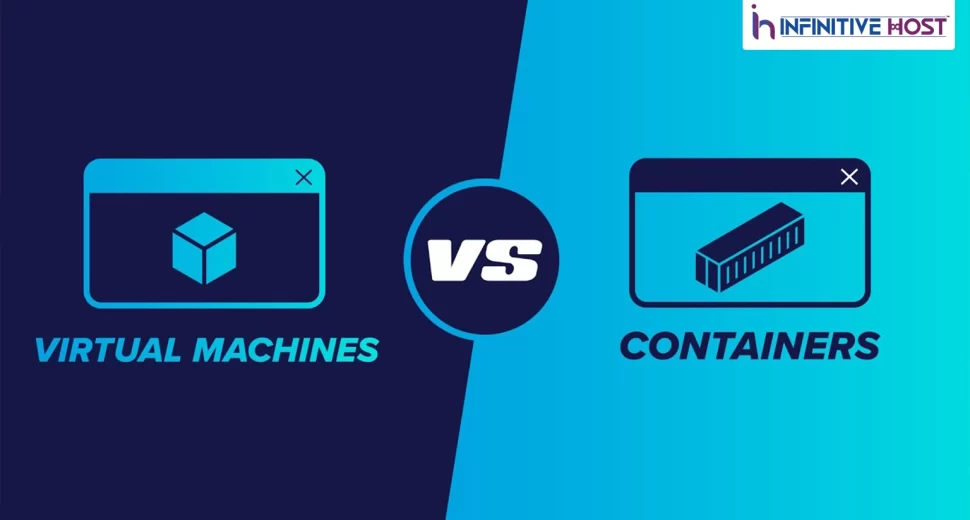In this blog, we’ll discuss how virtual machines (VMs) vary from containers. Virtual Machines (VMs) – What Are They? In the past, when server processing power and capacity expanded, bare metal applications could not take advantage of the newfound resource abundance. Thus, virtual machines (VMs) were established, created by running software on top of actual servers in order to imitate a certain hardware system. A hypervisor, or virtual machine monitor, is a piece of software, firmware, or hardware used to construct and manage virtual machines. It is the layer of software that stands between the physical hardware and the virtual machine and is required to virtualize the server.
Introduction
Each virtual machine contains a distinct guest operating system. On the same physical server, VMs running multiple operating systems can coexist—a UNIX VM can coexist with a Linux VM. Each VM has its own set of binaries, libraries, and programs, and the VM itself may be several gigabytes in size.
Containers and virtual machines are two closely related technologies for resource virtualisation. Virtualisation is the method through which a single system resource such as RAM, CPU, disc, or networking may be ‘virtualized’ and represented as a collection of resources. The critical distinction between containers and virtual machines is that virtual machines virtualize a full computer down to its hardware layers. In contrast, containers virtualize only the software layers above the operating system.
What are Containers?
Containers are small software packages that include all the requirements necessary to run the enclosed program. These dependencies include system libraries, third-party programs, and other operating-system-level applications. A container’s dependencies reside at a higher stack level than the operating system.
The concern now is how containers are segregated from other processes if they are similar to normal processes. This is the point at which namespaces are useful. Namespaces are a cutting-edge idea in Linux that allows each namespace to have its segregated resources without requiring the underlying hardware to be partitioned. The underlying operating system is virtualized through namespaces. Due to the fact that containers are simply OS processes, lifting a container takes seconds, whereas lifting a virtual machine takes minutes.
Pros
- Strong Ecosystem
The majority of container runtime systems provide a public repository of pre-built containers hosted on their servers. These container repositories feature a variety of popular software programs like databases and messaging systems that can be downloaded and performed instantaneously, saving development teams valuable time.
- Iteration Rate
Containers are extremely easy to alter and iterate on since they are lightweight and contain just high-level software.
Cons
- The escapades of shared hosts
It’s feasible that an exploit in one container may spill over into the common hardware underneath the operating system layer, making it more vulnerable to attack. Public sources of pre-built containers exist for most container runtime. As these public photos may include vulnerabilities or be open to hijacking by malevolent actors, there is a security risk in utilising them.
Read More : Hyper V vs. VMware ESXi : Which is better ?
What are Virtual Machines?
Hardware devices such as the CPU, Disk and Networking may be emulated using virtual machines, which are large and complex software packages. Complementary software stacks may also be included in virtual machines to run on emulated hardware. A completely working snapshot of a computing system may be obtained by combining these hardware and software components.
A layer of Hypervisor stands between physical hardware and operating systems if we look closely at how Virtual Machines are formed atop the actual hardware. Using a Hypervisor to virtualize the hardware, a user may then customise it in the way they see fit.
Pros
- Involvement in the creation of new products
Static container specifications include all the anticipated dependencies and configurations needed to operate the container. It is possible to construct virtual machines interactively since they are more dynamic. A virtual machine can be viewed as a bare-bones computer once the fundamental hardware description has been established. Manually installing software and taking a snapshot of the virtual machine’s present settings are possible with virtual machines. It is possible to restore a virtual machine to that point in time or create new virtual machines with the same configuration using snapshots of the underlying virtual machine.
- A complete level of security
A virtual machine is a completely separate system from the rest of the computer. Because of this, virtual machines on a shared host are impervious to attacks from other virtual machines. However, an individual virtual machine can still be hijacked by an attack that is not able to spread to other virtual machines in the network.
Cons
- Cost of storage space
Virtual machines can consume a significant amount of disc space. They are capable of rapidly growing to many gigabytes in size. This might result in disc space shortages on the host machine for the virtual machines.
- The rate of iteration
Because virtual computers comprise a full-stack system, they take time to develop and renew. Any changes to a virtual machine snapshot might take a considerable amount of time to regenerate and validate that they perform as planned.
Read More : A Comprehensive Guide To A Bare Metal Hypervisor
Conclusion
The primary distinction between Containers and Virtual Machines is that the Operating System and Hardware are virtualized separately. While each virtual machine has its underlying operating system, when using containers, each container runs on the same underlying operating system instance. Despite the fact that the underlying operating system is the same, containers can still have distinct OS environments within their respective namespaces.









